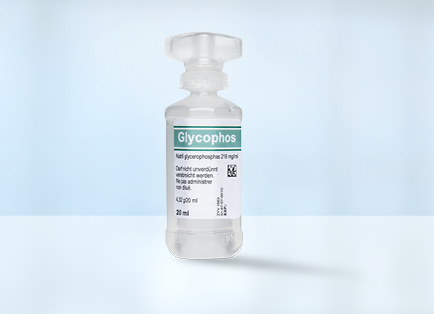Treatment of hypophosphatemia
INTRODUCTION ㅡ Hypophosphatemia is defined by serum phosphate < 2.5 mg/dL (< 0.8 mmol/L). Symptoms of hypophosphatemia rarely occur unless the serum phosphate concentration is less than 2 mg/dL (0.64 mmol/L). Severe hypophosphatemia may cause muscle weakness, tissue hypoxia and rhabdomyolysis. Parathyroid hormone (PTH) and fibroblast growth factor (FGF23) are the major factors that increase urine phosphate.
Elevated PTH causes hypophosphatemia by inhibiting reabsorption in the kidney, while Mutations in FGF-23 are associated with urinary phosphorous wasting with rickets or osteomalacia. Several medications can impair intestinal absorption of phosphate, particularly calcium, magnesium and aluminum-containing antacids.
| Table (1). Causes of Hyperphosphatemia | |
|---|---|
| CAUSE | FEATURES |
| Internal redistribution | Increased insulin secretion, particularly during refeeding |
| Increased insulin secretion, particularly during refeeding | |
| Acute respiratory alkalosis | |
| Decreased intestinal absorption | Inadequate intake |
| Inhibition of phosphate absorption (eg, antacids, phosphate binders, niacin) | |
| Steatorrhea and chronic diarrhea | |
| Vitamin D deficiency or resistance | |
| Increased urinary excretion | Primary and secondary hyperparathyroidism |
| Vitamin D deficiency or resistance | |
| Hereditary hypophosphatemic rickets | |
| Oncogenic osteomalacia | |
| Fanconi syndrome | |
| Other - acetazolamide, tenofovir, IV iron, chemotherapeutic agents | |
| Removal by renal replacement therapies | ـــــــــــــــــ |
DIAGNOSIS
The diagnostic workup for hypophosphatemia follows the algorithm presented in Algorithm (1). Measurement of urinary phosphate excretion should be helpful. Phosphate excretion can be measured either from a 24-hour urine collection or by calculation of the fractional excretion of filtered phosphate (FEPO4) from a random urine specimen.
The cause of hypophosphatemia is often evident from the history and physical examination. If not, measurement of either 24-hour urinary phosphate excretion or fractional excretion of phosphate (FEPO4) in a spot urine sample is often helpful.
FEPO4= Urine phosphate × Serum creatinineSerum phosphate × Urine creatinine
In the setting of hypophosphatemia, the normal response of the kidney is to reduce urinary phosphate excretion to less than 100 mg/day or to reduce FEPO4 to less than 5%. Higher values suggest one of the causes of renal phosphate wasting.
TREATMENT
PHOSPHATE REPLETION REGIMENS ㅡ In asymptomatic patients with a serum phosphate less than 2 mg/dL (0.64 mmol/L), we give oral phosphate therapy since many of these patients have myopathy and weakness that are not clinically apparent. For symptomatic patients, We treat with oral phosphate if the serum phosphate is 1.0 to 1.9 mg/dL (0.32 to 0.63 mmol/L), we treat with intravenous phosphate if the serum phosphate is less than 1 mg/dL (0.32 mmol/L) and switch to oral replacement when the serum phosphate exceeds 1.5 mg/dL (0.48 mmol/L). Oral repletion is most often achieved with a combined preparation of sodium and potassium phosphate, sodium phosphate (Glycophos) is preferred for intravenous therapy.
| Table (2). Dosing of Phosphate | ||
|---|---|---|
| ORAL PHOSPHATE | ||
| When oral dosing is used, we initiate therapy with 30 to 80 mmol of phosphate per day in divided doses. Phosphate may also be supplemented with skim milk, which contains approximately 15 mmol of phosphate per 480 mL serving. | ||
Serum phosphate |
Greater than or equal to 1.5 mg/dL (0.48 mmol/L) | 1 mmol/kg of elemental phosphorus (minimum of 40 mmol and a maximum of 80 mmol) can be given in three to four divided doses over a 24-hour period. |
| Less than 1.5 mg/dL (0.48 mmol/L) | 1.3 mmol/kg of elemental phosphorus (up to a maximum of 100 mmol) can be given in three to four divided doses over a 24-hour period. | |
| INTRAVENOUS PHOSPHATE | ||
| Intravenous phosphate is potentially dangerous since it can precipitate with calcium and produce a variety of adverse effects including hypocalcemia due to binding of calcium, renal failure due to calcium phosphate precipitation in the kidneys, and possibly fatal arrhythmias. | ||
Serum phosphate |
Greater than or equal to 1.25 mg/dL (0.40 mmol/L) | Give 0.08 to 0.24 mmol/kg over 6 hours (up to a maximum total dose of 30 mmol) |
| Less than 1.25 mg/dL (0.40 mmol/L) | Give 0.25 to 0.50 mmol/kg over 8 to 12 hours (up to a maximum total dose of 80 mmol) | |
The serum phosphate concentration should be monitored every 6 hours when intravenous phosphate is given, and the patient should be switched to oral replacement when the serum phosphate concentration reaches 1.5 mg/dL (0.48 mmol/L).
REFERENCES
-
García Martín A, Varsavsky M, Cortés Berdonces M, Ávila Rubio V, Alhambra Expósito MR, Novo Rodríguez C, Rozas Moreno P, Romero Muñoz M, Jódar Gimeno E, Rodríguez Ortega P, Muñoz Torres M. Phosphate disorders and clinical management of hypophosphatemia and hyperphosphatemia. Endocrinol Diabetes Nutr (Engl Ed). 2020 Mar;67(3):205-215. English, Spanish. Available at: https://www.sciencedirect.com/science/article/abs/pii/S2530016419301715?via%3Dihub
Michael D. Kraft, Pharm.D., Imad F. Btaiche, Pharm.D., BCNSP, Gordon S. Sacks, Pharm.D., BCNSP, Kenneth A. Kudsk, M.D., Treatment of electrolyte disorders in adult patients in the intensive care unit, American Journal of Health-System Pharmacy, Volume 62, Issue 16, 15 August 2005, Pages 1663–1682. Available at: https://academic.oup.com/ajhp/article-abstract/62/16/1663/5135673?redirectedFrom=fulltext

